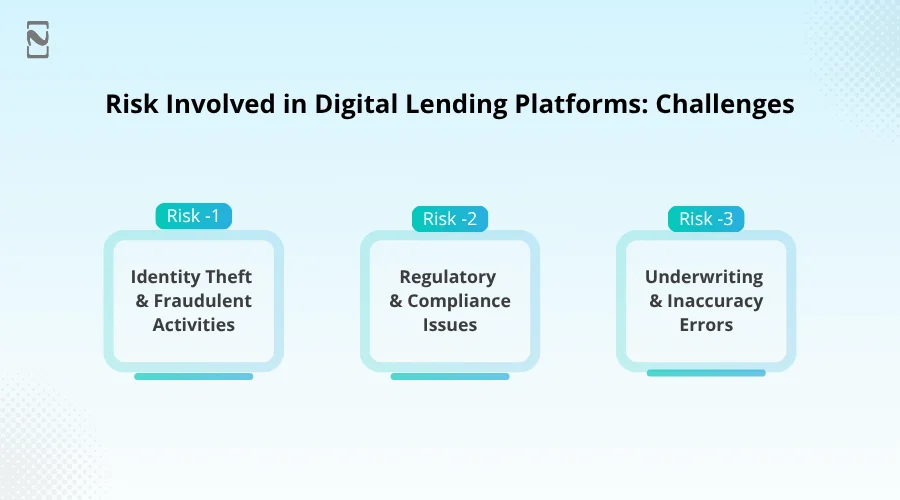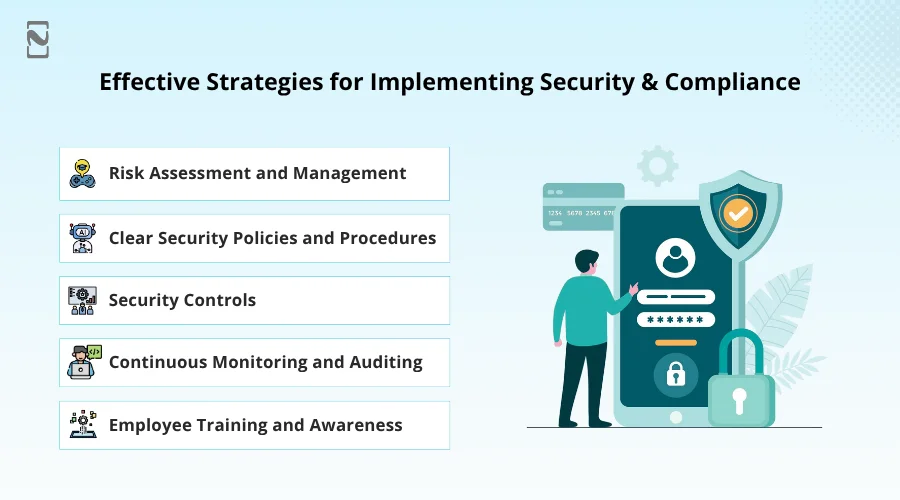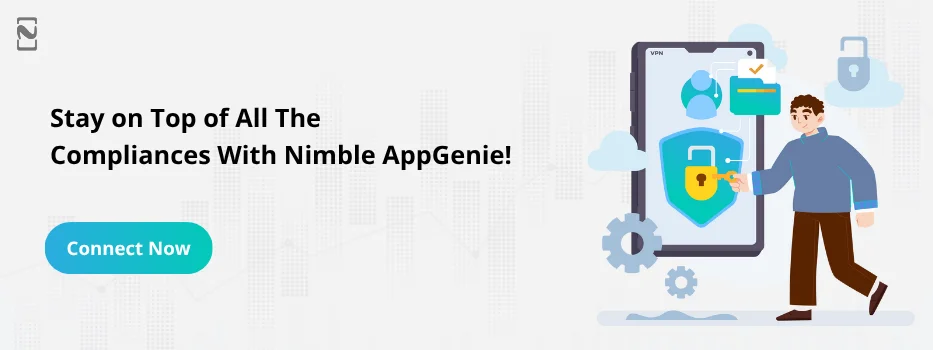Digital lending is all the buzz right now. People find it highly convenient to simply get a loan online, thanks to these platforms that make digital lending easily accessible. This convenience and market need has given rise to an entire online lending ecosystem.
Today, thousands of digital lending platforms are available in the market, allowing users to download and access funds with minimal effort.
However, since the process involves finance, there is a lot of sensitive information at stake. Which is why paying attention to the compliance and security of a digital lending platform is crucial.
Irrespective of whether you are a user or the owner of the app, you should be aware of all the security and compliance practices that can make the overall experience safe and secure.
In this post, let’s take a look at all the necessary security and compliance practices that you can implement. But before that, let’s try and understand what exactly is meant by security and compliance in digital lending.
Understanding Security and Compliance for Digital Lending
Security and compliance are integral parts of any fintech app. While security measures ensure that the application is safe to use and is not influenced by a third party, adherence to compliance and regulations helps in building a solution that is market-ready and follows all the legal practices that make the app suitable for use.
When we talk specifically about a digital lending platform, security is a prime concern as these platforms need access to a user’s personal information, financial stats, banking details, and creditworthiness.
All this information is considered highly sensitive, as someone with access to this data can surely hurt a user’s finances if they wanted to.
This is why there are dedicated measures that every mobile app developer is required to take while building the application, known as regulations and compliance.
These measures are generally decided by government bodies to ensure that public data is not being exploited and is not being sold to other organisations.
Since these regulations ensure that the private information of a user’s finances stays intact, these compliances are highly helpful in strengthening the security of a digital lending application. However, that is also not enough.
There has to be a proper mix of security compliance and additional measures in place, allowing you to be free of any government action and making your users more comfortable in sharing their information.
| Fintech App | Regulatory Bodies |
| Loan Lending Apps | Consumer Financial Protection Bureau (US), Fair Lending Act (US), Dodd-Frank Act (US) |
Reference – Fintech Regulations & Compliance
We have done a complete analysis of all the necessary fintech compliance, so check that out for more details. As far as security is concerned, basic data security becomes mandatory with the implementation of compliance for a digital lending platform.
There are additional measures that one can take, including –
- Use of Encryption
- Adding Multi-Factor Authentication
- Biometrics for Additional Security
- Use of Blockchain Technology
- AI-Enabled Data Analysis
While it seems all simplified and easy, the importance of these measures is always high. This is because when you plan to develop a digital lending platform, there are several challenges and risks that you may come across.
Risks Involved in Digital Lending Platforms: Challenges
There are several challenges that one has to face while establishing a digital lending platform.
The core reason why people are worried about security and compliance in a digital lending app is due to the amount of sensitive information that these apps require and store.
Now, handling all that data and ensuring that it is not leaked or exposed is certainly a challenge for any loan lending app development company.
Some of the main challenges that one might encounter in implementing security and compliance for a lending platform are –

1. Identity Theft & Fraudulent Activities
One of the most prominent challenges while dealing with a digital lending platform development is the risk of data theft. A robust system can help organizations to get rid of this risk, as added security compliance can help in resolving issues, making it more and more difficult.
2. Regulatory & Compliance Issues
Not being able to meet strict compliance and security requirements is another issue that many digital lending apps face.
Using security measures and procedures, one can easily navigate their way through these errors. Having significant security protocols is crucial to secure the app experience.
3. Underwriting & Inaccuracy Errors
When using the application, underwriting and inaccuracies while lending money and checking creditworthiness become a challenge for the app.
An individual’s bias towards granting a loan or inaccurate information while deciding creditworthiness manually can lead to issues. Introducing AI-enabled automation can be a great way to resolve this issue.
Effective Strategies for Implementing Security and Compliance
Knowing the challenges in implementing compliance and security measures that you have to take into account when building a digital lending platform, you may be wondering how to implement them effectively
Well, there is a series of implementation strategies that you can use at different stages to ensure that you have the best results. These strategies include –

► Risk Assessment and Management
The first thing to ensure that your application is secure and always follows the necessary compliance and regulations is to have a dedicated risk assessment system. For your digital lending app, you must set up a 3-step system that allows you to –
Assess Potential Risks
↓
Prioritize Risky Situations
↓
Start Risk Mitigation Instantly
The course of action is certainly helpful, as the more your application is aware of the risks, the more easily it can keep your application secure.
Digital lending applications are often prone to data theft and other risks, which can be neutralized by adding proper risk management.
► Clear Security Policies and Procedures
Building concise policies that demonstrate the intention and allow the user to be clear of what they can do and what they should not do can be a game-changer to make your application secure and compliant with all the necessary regulations.
Well-documented procedures can also be of great help in implementation. Make sure you regularly review the policies in use to be more precise with the results that you intend to achieve.
► Security Controls
To be more specific with the security of your application, you can set up multiple app security controls that allow you to understand whether your app is being used by authorized users or not.
Adding access controls gives you ample opportunity for user identification, making the app more secure. With the help of applied data protection compliance, you can effectively make your digital lending platform more secure.
► Continuous Monitoring and Auditing
Another crucial strategy to keep your application secure is to have a real-time monitoring system that allows you to continuously monitor every change in your app.
Sure, the compliances do allow you to track user activity that is being done on the platform, so that a log can be created. To ensure that monitoring is helpful, you can run regular audits that ensure that nothing is broken in the system.
Incident response is another thing that you should pay attention to, as there’s no point in monitoring if you do not have a solid incident response ready.
► Employee Training and Awareness
Employees play a major role in building a secure and compliant digital lending platform. If the operators assisting the users are not aware or trained properly, the chances of a lapse in security are higher. To ensure proper awareness, arranging security awareness training sessions for the employees can be a great strategy.
Following regular training updates and allowing trainees to be flexible with the way they learn can help you promote a security-conscious culture, which in turn makes your digital lending platform more and more secure.
Other than these strategies, you can even plan on making the application automated, reducing human intervention in repetitive tasks, which further reduces the chances of error. This way, security risks can be reduced significantly, making it more and more compliant.
How Nimble AppGenie Can Help You Build a Secure Digital Lending Platform
With the aforementioned strategies and inclusions, you can easily implement security and compliance in a digital lending platform. The idea here is to ensure that you find a development team that understands these risks and delivers on your expectations.
If you are worried about security and compliance issues with the app you have envisioned, you can reach out to our experts at Nimble AppGenie.
With decades of experience, we have played a pivotal role in making digital lending apps more secure and compliant with regulatory requirements. Sure, there are challenges as mentioned in the post, but with our expertise, we can surely help you overcome them in no time.
Connect with our experts today and start implementing the best security and compliance practices for digital lending platforms.
Conclusion
The entire purpose of strengthening compliance and security in the digital lending ecosystem is to ensure that there are no loopholes in the functioning of the services.
Users can benefit from data protection, and business owners can make the most of a secure platform with minimal risks. Identifying the compliance and security risks and resolving them with effective strategies can surely make a difference in the overall success of a digital landing platform.
Hope the information provided in this post helps you in creating a safe experience for the users and efficient functioning of your app.
FAQs

Niketan Sharma, CTO, Nimble AppGenie, is a tech enthusiast with more than a decade of experience in delivering high-value solutions that allow a brand to penetrate the market easily. With a strong hold on mobile app development, he is actively working to help businesses identify the potential of digital transformation by sharing insightful statistics, guides & blogs.
Table of Contents






No Comments
Comments are closed.